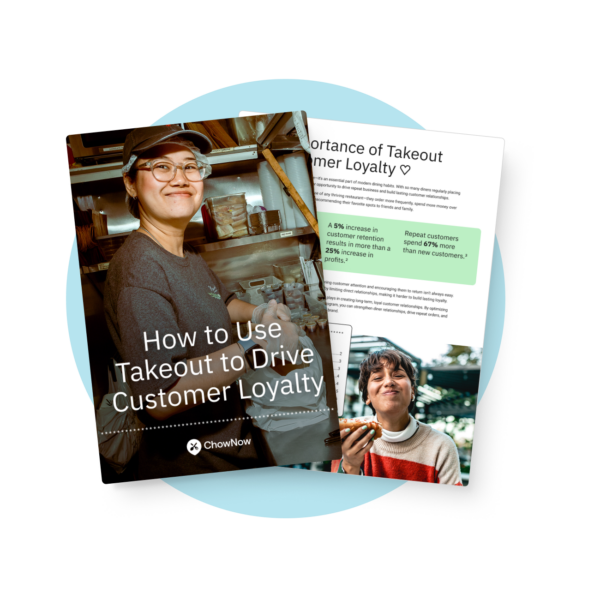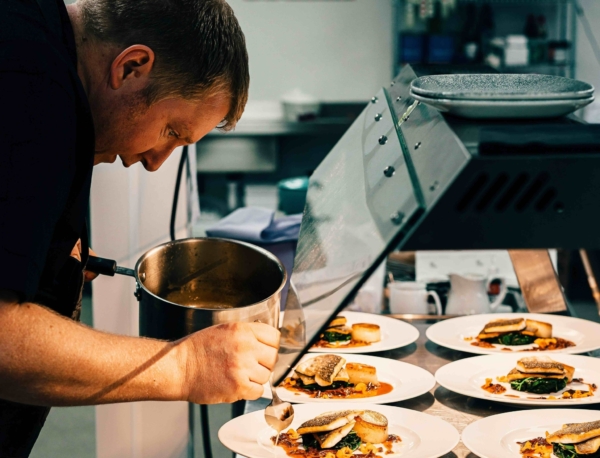How To Cut Restaurant Operating Costs Without Compromising Quality


Running a restaurant is equal parts passion and precision—especially when it comes to running the numbers.
One of operators’ most difficult challenges is balancing restaurant operating costs without compromising the food, service, and customer experience that makes your restaurant unique.
Fortunately, though, cutting costs doesn’t have to mean cutting corners, sacrificing the qualities of your restaurant that keep customers coming back again and again.
With the right strategy, you can reduce expenses and strengthen your business at the same time.
In this article, you’ll learn:
- How to break down your operating costs into fixed, variable, and semi-variable
- Smart ways to lower labor and food costs without sacrificing customer service
- Where hidden expenses are hiding in your tech stack—and how to fix it
Let’s discover where your money is going, and how to take back control.
The Three Types of Restaurant Operating Costs

Before you can start paring down expenses, you have to understand what you’re actually spending and why.
In the restaurant business, operating costs are the day-to-day expenses required to keep your doors open and your kitchen firing—everything from rent to payroll to the packaging your to-go orders go out in.
The more clearly you can see where your money is going, the easier it’ll be to identify opportunities to save.
Your total operating costs generally fall into three categories:
- Fixed Costs
- Variable Costs
- Semi-variable Costs
Fixed Costs: The Non-Negotiables
These are your “no matter what” costs. Meaning it doesn’t matter how busy or slow you are, these restaurant operating costs don’t change.
Examples include:
- Rent or mortgage payments
- Insurance premiums
- Loan payments
- Salaried employees (like general manager or executive chef)
Because they’re consistent, fixed costs are easier to budget for, but that also means they’re harder to reduce without significant structural changes.
Variable Costs: Expenses Tied to Sales Volume
Variable costs rise and fall depending on how busy you are. If you’re pushing out more orders, getting more ingredients, and staffing more servers, these costs will reflect that.
Examples include:
- Food and beverage costs
- Hourly wages for staff
- Takeout packaging and containers
- Credit card and online processing fees
These costs are usually the easiest to adjust and optimize in real time.
Semi-Variable Costs: Blended Expenses
Sometimes called mixed costs, semi-variable costs have a flat base rate that increases with usage.
For example, your utility costs (gas, electric, water) don’t just double on a busy night, but they do rise over time with extended hours or kitchen equipment use.
Other examples include:
- Software subscriptions with usage-based tiers
- Maintenance or repair work
- Overtime pay for hourly workers
Semi-variable restaurant costs can sneak up on you if you’re not watching closely, but they’re also an area where a little strategy can go a long way toward minimizing waste.
Labor Costs: Your Biggest (and Most Sensitive) Expense
Labor Costs are almost always your biggest line item and your most delicate to manage, often accounting for 20% to 30% of total sales.
That makes total labor costs both a high-stakes expense and one of the most effective levers you can pull when it comes time to control restaurant operating costs.
Here’s the catch, though: unlike reducing food costs or renegotiating vendor contracts, labor is personal.
Your team is the heart of your operations—cut labor costs too hard or too fast, and you risk damaging employee morale, guest experience, and ultimately, your reputation.
As you know, there’s no shortage of labor challenges:
- Rising hourly wages driven by minimum wage hikes
- Persistent employee turnover
- High training costs for new hires
- Payroll taxes and employee benefits
So how do you reduce labor costs without burning out your team or sacrificing customer service?
Here are a couple ideas on how to save money while still keeping employee retention and service quality:
- Use Smart Scheduling Tools Instead of Shorter Shifts: Digital scheduling tools can factor in sales history, weather, and seasonal traffic when helping you build your schedule, preventing overstaffing and reducing unnecessary hours without leaving you shorthanded when the rush hits.
- Cross-train your team: When hourly employees can handle multiple roles, you get more flexibility and better coverage without needing to add extra shifts. That also means your existing employees stay engaged and have room to grow—win-win.
Streamlining your scheduling and training does more than lower operating expenses; it gives your team a clearer structure and gives your team more confidence in their skill set, strengthening overall performance and improving the guest experience.
Food & Beverage Costs: Optimize Without Cutting Corners

Food costs are another major piece of your restaurant operating costs pie, and just like labor, they are deeply tied to the quality and consistency of your customers’ experience.
Most restaurants’ food cost percentage should fall somewhere between 28%-35%, depending on your concept and pricing strategy.
While cutting food costs to save money can feel like low-hanging fruit, it comes with an inherent risk: go too far and you change the customer experience in a negative way.
Cheaper ingredients and smaller portions can take a toll on your customers’ loyalty, and that’s a cost no restaurant owner can afford.
So, how do you keep restaurant food costs down without sacrificing quality?
- Use Recipe Costing Tools: Tracking the cost of every dish, down to the garnish, lets you spot shrinking margins before they hit your bottom line. Good inventory management tools can alert you to fluctuating food prices and help you adjust menu prices appropriately.
- Control Portions and Reduce Waste: Invest in simple tools like scales and ladles, then train your team in consistent portioning until it’s second nature. You’ll reduce waste, improve consistency, and make it easier to spot when something is going off the rails.
- Use Data to Plan Ahead: Use sales and demand data to plan better prep lists and better schedules. By syncing labor costs with the actual expected volume, you avoid overprepping the kitchen and overscheduling staff.
Smart cost management in back of house has nothing to do with cutting corners—it’s about dialing in systems that help your stay consistent, and when done right, you’ll save a ton of money without your customers noticing a thing.
Marketing & Ordering Tech: Consolidate to Save
An expense that makes running your restaurant easier but is often overlooked is your tech stack.
Many operators find themself juggling a stack of disconnected tools: one for email marketing, one for loyalty programs, another for online ordering—each with its own fees, logins, and learning curve.
This patchwork approach doesn’t just increase your operating expenses, it creates room for mistakes, missed data, and miscommunications across your team.
Consolidating your digital tools into a single system can dramatically save money and time.

For example, restaurant operators that use ChowNow have a platform that combines online ordering with built-in marketing tools that can help drive more traffic, increase repeat visits, and reduce your reliance on third-party takeout apps.
With a centralized system, you also avoid “tool overload,” which can lead to paying for tools you don’t use or need and waste time bouncing between platforms.
If you’re looking to trim your marketing costs without losing momentum, streamlining your tech stack is a great place to start.
Rent, Utilities & Overhead: Control What You Can
Some expenses, like insurance, rent, or mortgage payments, are baked into the cost of running your restaurant.
These fixed costs don’t shift much month to month, which can make them easy to ignore when you’re trying to lower your restaurant’s operating costs, but that doesn’t mean they’re untouchable.
The trick is to regularly review your ongoing operating costs to see what kind of saving opportunities might come to the surface.
- Rethink How You Use Your Space: Are you fully using every square foot of your restaurant? If there are underused dining areas or sections that sit empty during slow periods, it might be time to rethink your layout, or even downsize if your lease renewal is coming up. Downsizing or reconfiguring could reduce your rent or mortgage payments or open up new revenue opportunities like delivery staging, or retail space.
- Cut Your Utility Costs Without Cutting Comfort: Swapping out outdated kitchen equipment for newer, energy-efficient appliances can reduce your monthly spend. Even small fixes, like motion-sensor lighting in restrooms or dry storage, can add up. These upgrades can pay for themselves surprisingly quickly, especially when you’re operating for long hours.
- Renegotiate Overhead Services: Don’t set and forget service contracts. Are you paying too much for pest control, linen services, or waste disposal? Vendors often raise rates over time, and they might not always notify you of the increase. A quick review (and a few competitive quotes) can help you renegotiate better terms or switch to a business that gives you value.
These aren’t flashy changes, but they chip away at your ongoing operating costs without disrupting day-to-day operations, making them a smart place to make changes.
Spend Less Without Sacrificing Quality
When done well, cost-cutting strategies can save you thousands over the year, while still giving your customers the same exceptional experience that makes your restaurant great.
Contact ChowNow to learn how having your marketing tools and online ordering system in one, easy-to-use place can save you time, money, and headaches.






